-
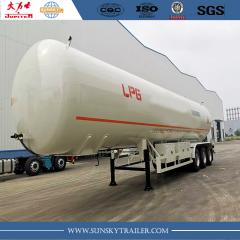 3 Axle Lpg Gas Tank Semi Trailer
3 Axle Lpg Gas Tank Semi Trailer
-
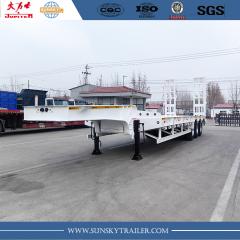 Low Bed Trailer
Low Bed Trailer
-
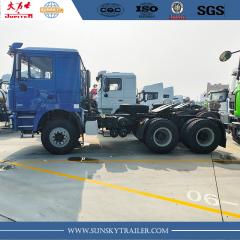 SHACMAN F3000 Tractor Truck
SHACMAN F3000 Tractor Truck
-
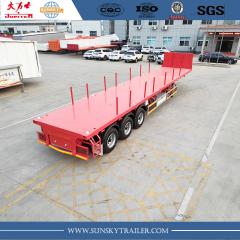 Flatbed Pillar Trailer
Flatbed Pillar Trailer
SUNSKY VEHICLE, a manufacturer of flatbed semi-trailers, has found that the Flatbed Pillar Trailer i...
Crude oil tankers are capable of transporting large volumes of fuel, which helps to improve transportation efficiency by moving more goods at once. When compared to traditional tank trucks, semi-trailers have the ability to transport even larger amounts of oil.
The crude oil tanker trucks available for purchase feature more advanced designs and materials, which in turn enhances the stability and safety of the entire vehicle. Safety features such as anti-leakage and anti-collision measures have been further strengthened. At Sunsky Vehicle, it is possible to customize a tanker truck with a capacity ranging from 20,000 to 50,000 liters, for example, a 45,000L Aluminum Fuel Tanker Trailer is priced at $24,000. In Africa, tank semi-trailers with capacities of 40,000 to 45,000 liters are especially popular.
Tank trailers for sale in South Africa
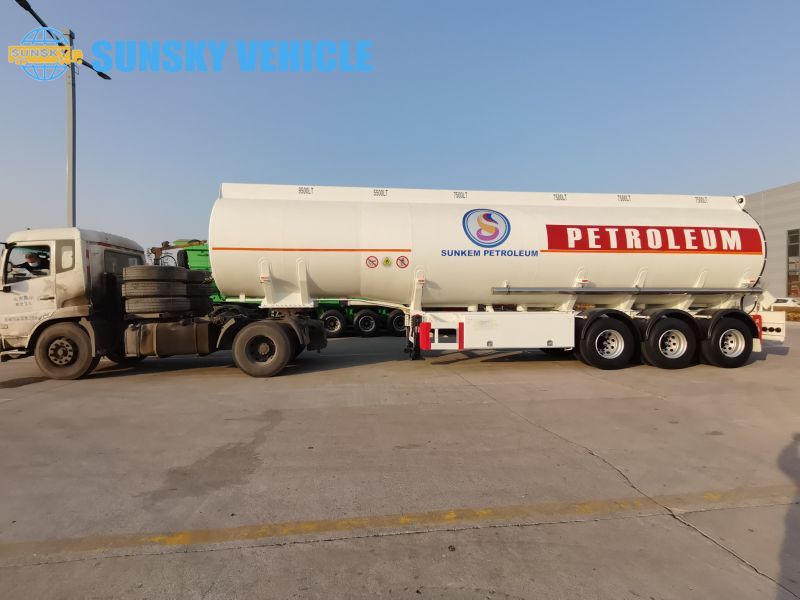
Tank trailers for sale in South Africa
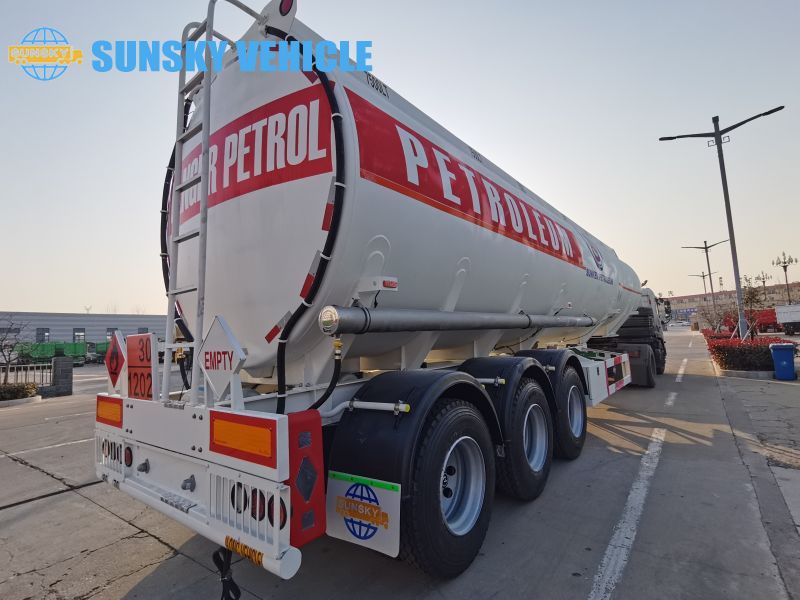
Tank trailers for sale in South Africa
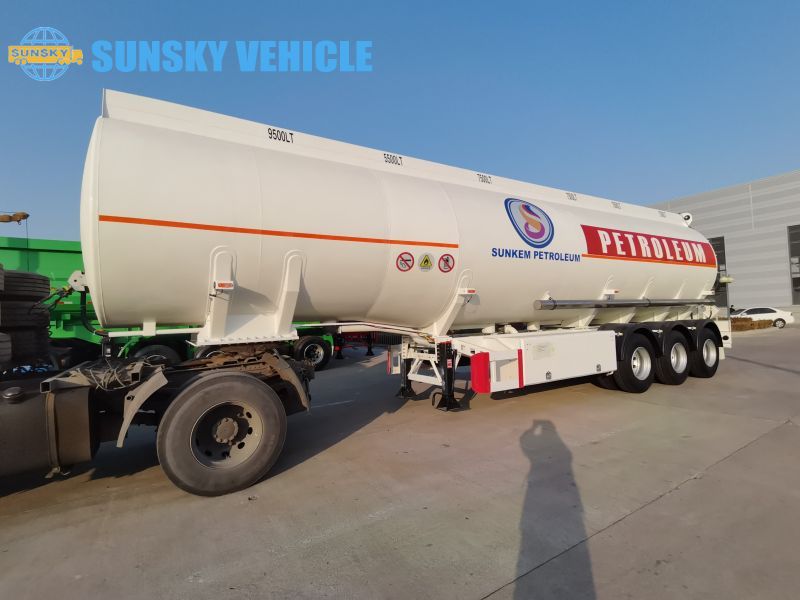
When handling hazardous chemicals, any mistake during tanker loading and unloading can lead to a catastrophe. What are the safety requirements for these operations?
What are the safety requirements for tanker loading and unloading operations before loading and unloading?
Here are the safety requirements for tanker loading and unloading operations:
1. Prior to entering the facility, drivers must present the "bill of lading" or "delivery note", vehicle driving license, driver's license, escort license, and complete all necessary procedures. Only after the vehicle and personnel have been thoroughly inspected and graded by the manufacturer for safety and security, should they proceed to the loading and unloading area. It is strictly prohibited to bring non-explosion-proof items such as mobile phones and lighters, as well as emergency items and unrelated personnel into the loading and unloading area.
2. Before commencing loading and unloading operations, the operators should ensure that the tanker is positioned correctly at the loading and unloading crane, turn off the ignition, park the vehicle securely, place anti-slip equipment and warning facilities in front of the vehicle to prevent movement, and hand over the car key to the loading and unloading workshop (station) for unified safekeeping.
3. It is essential to ensure that the electrostatic grounding device of the car tanker and the loading and unloading pallet is securely connected.
4. The loading and unloading personnel, along with the driver or escort, must jointly ensure that the quick coupling between the loading and unloading arm and the filling port of the automobile tanker is properly clamped and locked, and that the relevant signatures are confirmed.
5. Before commencing loading and unloading operations, the personnel responsible for the equipment, including the loading and unloading operators, escorts, and drivers, should conduct safety inspections to confirm that there are no abnormalities.
Loading and Unloading
1. Video surveillance should be maintained throughout the loading and unloading process. A cordon should be established around the loading and unloading vehicles to prevent unauthorized personnel and vehicles from entering.
2. In the event of any abnormality during loading and unloading, the escort or driver should be capable of promptly closing the emergency shut-off valve on the tanker.
3. It is strictly prohibited to fill the tanker beyond its maximum design capacity, and overfilling is also strictly prohibited.
After the loading and unloading process:
1. The loading and unloading operator stops the loading meter and closes the shut-off valve and the loading pump in front of the loading and unloading arm.
2. The escort or driver closes the valve on the vehicle and the filling port of the vehicle, and the loading and unloading operator adds a closed label.
3. After inspection and confirmation, the car tanker is completely separated from the connecting pipe of the loading and unloading trestle, the electrostatic conductive wire, and other connecting parts, and the vehicle is released from the loading and unloading trestle.
Usage instructions:
1. Do not use hoses to load and unload liquefied hydrocarbons. Do not have vehicles waiting at the loading and unloading site. After loading and unloading, vehicles should not remain at the site, and unauthorized personnel are not allowed to enter the operation site. No ignition sources are allowed at the operation site. Continuous loading and unloading operations are strictly prohibited 24 hours a day.
2. Night loading and unloading operations should be avoided (after 8:00 PM) unless required by local government road traffic regulations or enterprise production needs. In such cases, production enterprises and professional companies should jointly study, enhance on-site monitoring, emergency repair personnel, material allocation, and night lighting. Additionally, a special emergency response plan for night loading and unloading vehicles should be developed.
3. Loading and unloading operations should not be conducted in the following circumstances:
(1) Severe weather such as thunderstorms and sandstorms is present.
(2) Dangerous situations such as open flames nearby or abnormal working conditions of equipment and pipelines in the loading and unloading area occur.
(3) Abnormalities in liquefied hydrocarbon vehicles or their safety accessories, loading and unloading accessories, etc., are detected.
(4) Gas leakage is found or detected.




